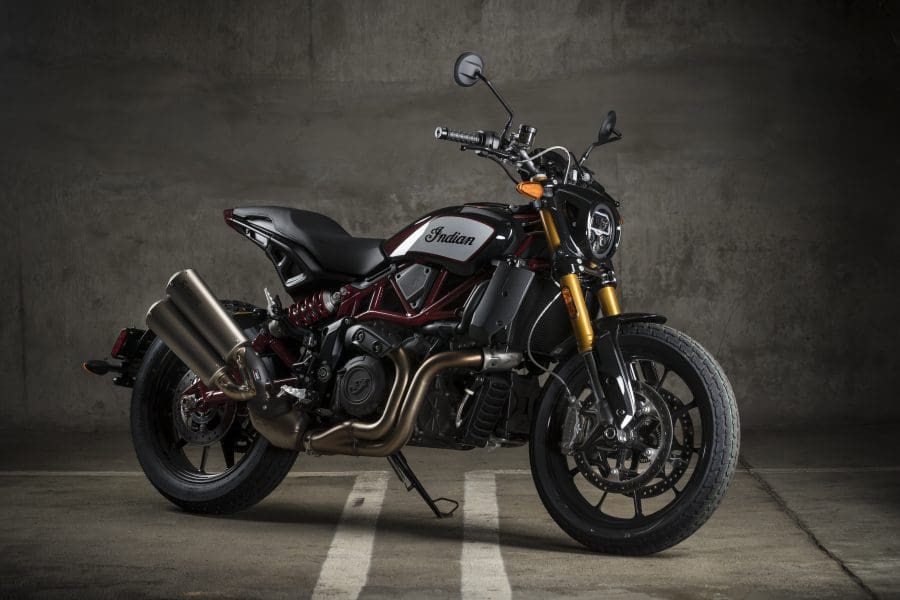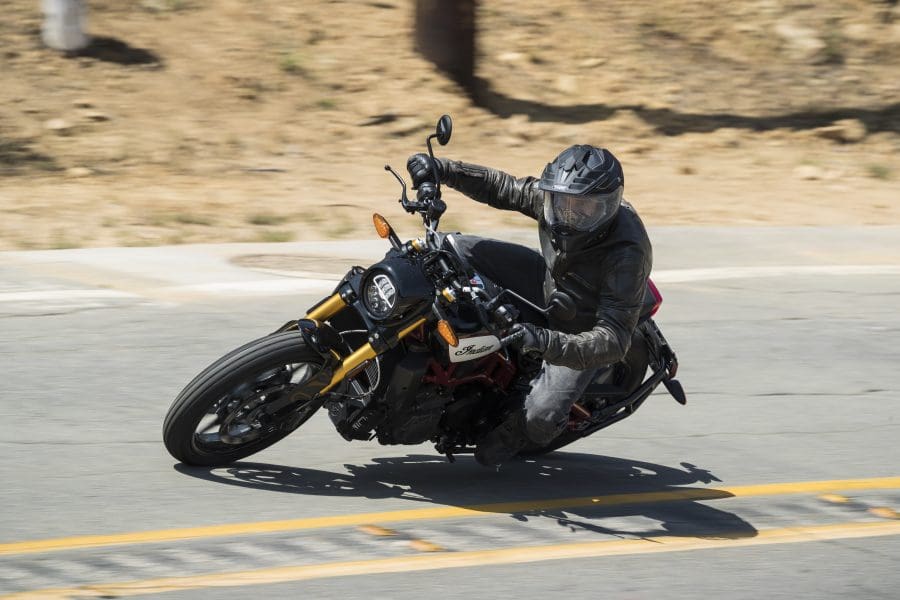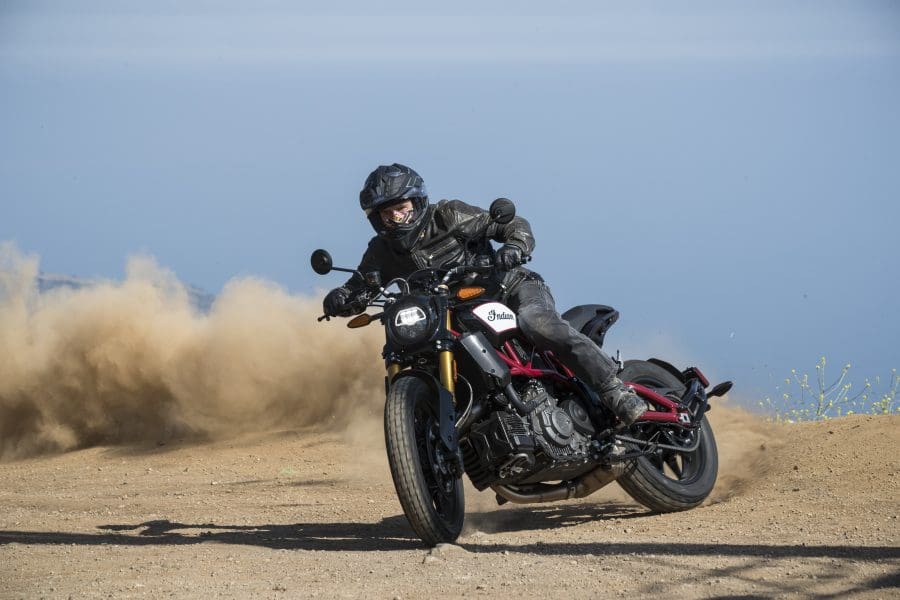In the crammed and competitive space that is the big-bore naked market, Indian would have been a fool to flog us a flimsily disguised facsimile of what’s already on offer. Thankfully, a fool it is not. Instead, the FTR 1200 is a refreshing and unique newcomer, with a character and personality which owes nothing to any other roadster in the game. A true Indian. And this is completely down to the fact that Indian itself produced the bike with which the FTR 1200 takes its inspiration; the FTR750 factory flat track racer.
How much does the FTR 1200 have in common with Indian’s factory flat tracker? Not much, really. How much does it matter? Even less. If you want an FTR 750 to do a bit of high-speed circle-work, you can have one for US$50K. However, the FTR 1200 is a roadbike dressed for the dirt, not a dirt tracker modified for the street. And this is all fine. All part of the great motorcycling tradition of selling bikes by winning races and printing stickers. If the FTR 1200 goes and blows away the field in the production-based AFT Hooligan class, then it can garner some genuine flat track kudos of its own, and I certainly wouldn’t bet against it.
Development testing on the FTR 1200 commenced in March 2016, and for a new platform to go from development mule to launch in just three years is as quick as it gets in motorcycle manufacturing. Depending on its complexity, four to five years is the common time scale for a clean-sheet design. Considering this, it’s plain to see that Polaris is a somewhat underestimated powerhouse of the industry, which bodes well for its ability to react quickly to the market.

The street and race FTRs’ familial characteristics are engineered through both styling cues and physical attributes. The wheels and tyres, for instance, were a key part of the design brief to be faithful to the flat track aesthetic, and as a result play a huge part in defining the dynamic character of the FTR 1200 chassis. Dunlop developed the street version of its DTR competition tyre specifically for the FTR 1200, and its conventional sportsbike-like 120/70 profile gave a convincing hold on the road and a reassuringly solid platform for heavy braking, which is not what I would have predicted for such a seriously powerful braking package combined with the deep block pattern of the DTR tyres.
The FTR’s handling is unique to a point just north of quirky, but it’s also engaging, easily adapted to, and an imperial f***tonne of fun.
Indian’s factory FTR racer is a surprisingly tall machine up close, defying the low profile look of the seat, tank and airbox cover combination. The FTR 1200 follows its namesake in looking low but riding surprisingly high. But, don’t let a tallish seat put you off having a test ride, the FTR’s low centre of mass, wide ’bars, narrow tyres and short wheelbase all help make it easy to manoeuvre at low speed for a bike of its weight.
Character is all-important in a bike that will be purchased primarily for its hot looks and ballsy attitude. The FTR has the goods in all three. Its 1203cc 60-degree V-twin lays down a sumptuous spread of power befitting a bike born on the dirt. I rode a snaking section of switchbacks, some as slow as 30km/h, all in sixth gear. Not a problem. Even with wide open throttle from near-idle rpm, the FTR would pull smoothly in top.

Think Super Fly, played through an Akrapovic. The Factory Replica FTR 1200 S comes with the famed Slovenian song pipes fitted as standard, plus the substantially faster looking ‘Indian Red’ frame and race replica paint. Which undoubtably make it worth the extra two grand investment.
Although its power delivery is more supple than psycho, that’s not to say the standard bike isn’t also a hustler. Think Super Fly, again, because it’s a bad mutha when you want some. From 6000rpm there’s an extra injection of urgency, which links the curves with more than enough zip to keep hardened scratchers happy. Though seemingly quite a stylised and focussed design, the FTR has the versatility to satisfy many moods of the pleasure-obsessed motorcyclist.
Indian makes no bones about this being a vital breakthrough model for them to achieve their ambitious goals for global sales, and they expect the FTR to be their strongest model as soon as it hits the dealers. The question is, will the FTR 1200 meet the expectations of the many riders lured by its carefully crafted Wrecking Crew image?
For me, as someone who was seduced by the storyline first, then rode the machine later, the answer is… Yes! I wanted thrills and fun, and I got ‘em by the canyon load. This is a motorcycle I would genuinely love to have in my own garage. Why? Because life is made for good times, and the FTR 1200 was built to deliver.

Words Paul Young
Pics Indian Motorcycles











